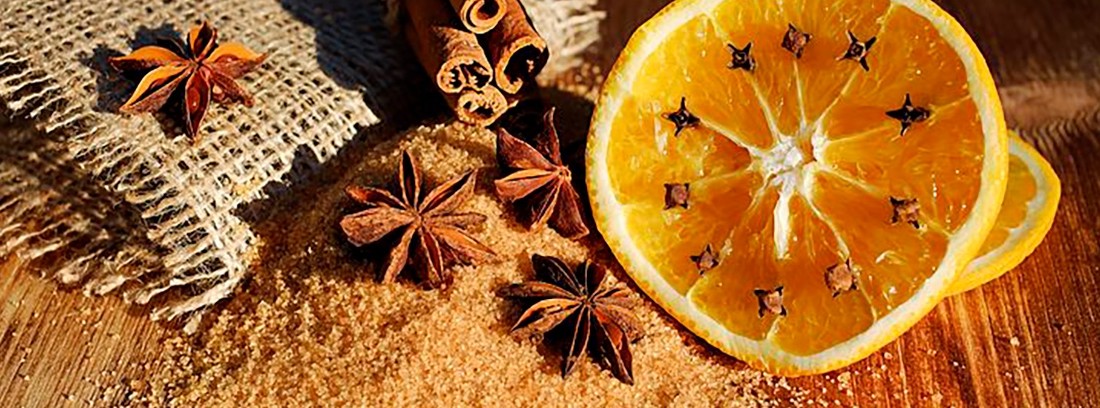Star Anise: A Journey Through Flavor and Health

Star anise (Illicium verum Hooker fil. L) is an evergreen tree native to southwestern China, Korea, and Japan, whose star-shaped fruits are widely used in both traditional Chinese medicine and cooking, expanding its use to the south from Asia and Indonesia. In Japan it was introduced by buddhists and many of these trees can be found in Japanese Buddhist temples. It is currently also grown in the southeastern United States and in other hot, humid areas.
What is star anise for?
Star anise is used to improve digestions. Due to its carminative effect (facilitator of the elimination of gases) it is used against aerophagia and meteorism, as it also has an antispasmodic effect, it is useful to relieve flatus and when there is abdominal pain due to spasms. It is also useful to relieve pain and intestinal spasms that often accompany diarrhea and the processes of. It is also used in a traditional way to increase the secretion of milk in lactation.
Other current uses
In the food industry to flavor and flavor beverages and pastries. It also has expectorant action, which is why it is used as. Added to the cooking water of legumes and other flatulent foods such as cabbage, it facilitates the elimination of gases that these foods can cause.
Star anise infusions
According to the General Directorate of Public Health and Consumption of the Ministry of Spain, infusions should be prepared as follows: add an anise star (approx. 1 g), or a filter bag, to a cup of boiling water, cover, let stand five minutes and filter. It's recommended use after main meals or when there is a sensation of flatulence.
How much anise to put in the infusion
- Infants and children under 2 years: 1 tablespoon (10 ml) of the infusion prepared as mentioned above, either directly or dissolved in a glass or bottle with a little water. Never exceed this dose.
- Children from 2 to 6 years: 4 tablespoons of the infusion, either directly or dissolved in a little water.
- Children 6 to 12 years: half a cup of infusion.
- Adults: a cup of infusion.
The infusion should be consumed at the moment and it is not convenient to save the excess amount for later, because it loses its properties and can deteriorate. You should never cook with the fruits by boiling them, since the resulting liquid will be concentrated and unwanted substances can be extracted and dissolved while the volatile substances that have digestive properties evaporate.
Plant
It is a very attractive tree, especially when it is in flower or in fruit, of the magnolia family. It reaches around 5 to 10 m in height, and the trunk has a whitish bark. The leaves are elliptical, lanceolate, pointed, with a full edge and a very shiny green color. The flowers are very decorative, they have between 15 and 20 narrow yellowish / greenish white or pinkish white (depending on the variety) petals arranged in a spiral.
The fruits are star-shaped (hence their name) with 6 to 12 points (follicles), usually eight brown in color. Each follicle has a slit that reveals a single, very shiny brown seed inside.
The part that is used are the fruits with their seeds.
Your name
Star anise is also known as Chinese star anise or Chinese badian. The name of badiana comes from the Latin adjective badius that refers to the reddish brown color of the fruits and seeds. Illicium comes from the Latin illicere which means "to excite", which is attributed to the powerful anise aroma that its fruits give off. Verum means true.
Star anise species
There are two species of star anise that belong to the same family, but it is convenient to differentiate very well. The true star anise (or badian) from China is Illicium verum, which contains anethole, such as green anise or matalahuga, fennel and other plants of the apiaceae family that grow in our country and are used as digestive plants.
The other species is the Illicium anisatum or religiosum, also called "Japanese badian" or "Japanese star anise", which contains toxic compounds such as anisatin and neoanisatin. The appearance of the fruits of both species can be confused with the naked eye if you are not an expert. This has led, on some occasions, to confusion that has led to small children, so it is advisable not to buy star anise other than from suppliers that are known to carry out the identification of the plant species that they commercialize with scientific methods.
Contraindications, adverse effects and recommendations
Although the infusion is very safe (if not confused with Illicium religiosum), star anise essential oil should not be administered during pregnancy or lactation, or to children under six years of age or to patients with gastritis, gastroduodenal ulcers, syndrome irritable bowel, ulcerative colitis, Crohn's disease, liver disease, epilepsy, Parkinson's or other neurological diseases.
It should also not be administered to people with sensitivity to anise, anethole or other essential oils.
- Both in traditional use and today it is used to improve digestion.
- It is useful for relieving gas, as well as pain and intestinal spasms.
- It is used in infusion (1 anise star per cup of water, approximately).
“Informative note: the contents included in this section offer information related to existing therapies explained by specialists with experience in the field with an informative objective. MAPFRE does not intend under any circumstances to position itself on its suitability or expressly promote its use ”.
(Updated at Apr 13 / 2024)